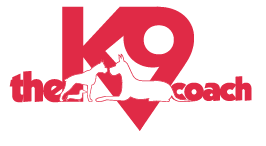Training For Muscle Memory
Train Your Dog Like You Train an Athlete. Practice Often. Before The Big Game.
Use your words.
Use your hand signals.
Use your training.
We want you to have a very clear communication method with your dog. It is a consistent word choice. Consistent hand signal / body language. And very clear expectations of what to do when "x" happens.
You need to show up consistently, perform your own skills consistently and expect certain behaviors from your dog. He's going to draw on your for confidence. We teach you how to achieve that. For dogs that have a history of fear aggression, resource guarding, or other behavioral issues -- this is critical. You must you practice it many times when distractions are low. Then, when the stakes are high, the environment is new, you are simply asking something of him he has done many times before and knows how to be successful.
Start to increase the challenges -- venture out somewhere new, invite a friend over for a little controlled setup for the dog, and increase the level of distraction. As you progress forward (and you must), do what you're both trained to do and give him a command to perform. Keep it simple. You don't have to go through the entire repertoire of skills -- a good sit/stay and watch me will do; if that's all he can handle with the new change.
It takes time to create success of course. It truly is training and practice much like an athlete. Practice often and just because even when you are no longer having problems.
At some point in the future, run your own little tune-up boot camp. Periodically, just because it’s 2:02 in the afternoon ask the dog to do a down-stay in the hallway, surprise him with a recall command while you’re outside playing. Proof your skills and continue reinforcing good behavior. Look for gaps where the training might be getting lazy. And have fun with your dog.
When you do anything other than what you have trained for, it may be confusing to your dog. Confusion can lead to frustration which can lead to him communicating with you by growling, snapping, or even biting in extreme moments.
This can be applied to many scenarios that will help prevent your dog from "guarding". Teach what to do and how to be successful - -then use that teaching when the stakes are high and don't panic.Example: your dog guards the couch. You've taught him not to be on the couch. A few weeks later you find him up on the couch. Your first reaction cannot be to physically remove him by reaching for his collar or shooing him off by poking his butt or sitting on him. Give the dog the command "off" (which you should have taught him by now). Praise and reward success.This can be the same for him having a kids toy he shouldn't have -- don't pry it out of his mouth, use the command you taught for drop it.
YOU have to be consistent to and can't expect him to perform well if you change the expectation and start physically manipulating him to move or give up some object.
******************
Start training your dog for basic skills (whether he has issues or not) as soon as you bring him home!
Basic life skills include Sit/Stay, Come When Called, Drop It, Leave It and Watch me.
If you have not yet trained him for skills like Off & Drop It and you see a new guarding behavior redirect him to some other item of value (treat, toy, etc) -- in the heat of the moment just get him out of the aggression mindset -- we can begin training later, but we can't undo snapping and biting.
(And that my friends is an early bite-prevention tip)
